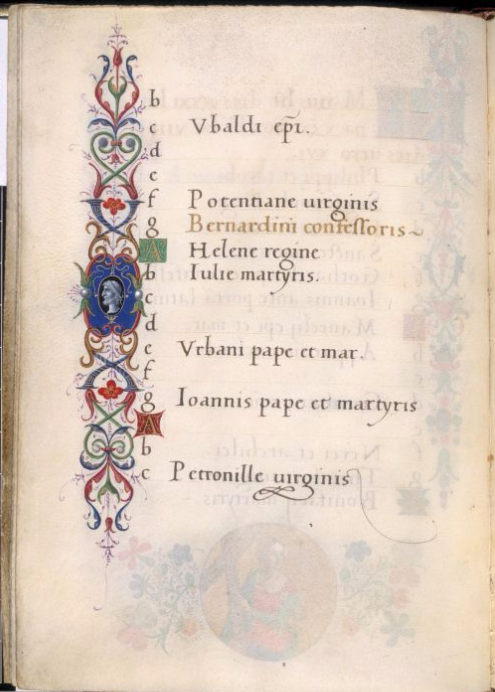From the Bibliothèque nationale de France comes Latin 1173, the Hours of Charles d’Angoulême, made in France in the Late 15th C. Charles was the father of King François I(r. 1515-1547), and is identified by his arms on f.53r. The Hours are Use of Paris, but the calendar has not been localized.
Most of the literature on this MS is not focused on the text at all, but either the miniatures. Many of these are originals by Robinet Testard, but several are actually prints by Israel van Meckenem (signed IM), which have been colored and embellished by Testard. The calendar is populated with quite distinct illustrations. The labors of the month are unusual and 9 of the KL initials are formed by humans, often in brown/blue clothing, contorted and posing with strange beasts. May (f.3r below) is a representative example, with the woman seemingly unconcerned by the dragon attacking her to form the arms of the “K”. What seems to be the labor is, in fact, two “wild men” jousting
In the content of the calendar there are both some unusual saints listed as well as an interesting bit of scribal error. The calendar starts out mostly full, 27 in Jan, but immediately starts to open up, with only 12 in February. In January some of the entries are quite rare, eg. the heretofore unique 40 Martyrs (4294) on Jan 9.
The calendar starts out triple-graded, blue/red/black, and is carefully graded, several multiple-saint entries are graded distinctly for each saint. In November, however, the scribe seems to forget that he’s triple-grading, and starts to use red and blue in simple alternation when there are high-ranks. This was less definitive in early November, All Saints (2850) in blue vs. All Souls (2993) in red, but becomes more evident as the month proceeds. In December it is unavoidable with strict alternation of red/blue in the Christmas (814) through Holy Innocents (823) block. Were this still triple graded, Christmas, in red, would be outranked by the Holy Innocents and even St. Barbara (853), both in blue.
(DB Id: 278)
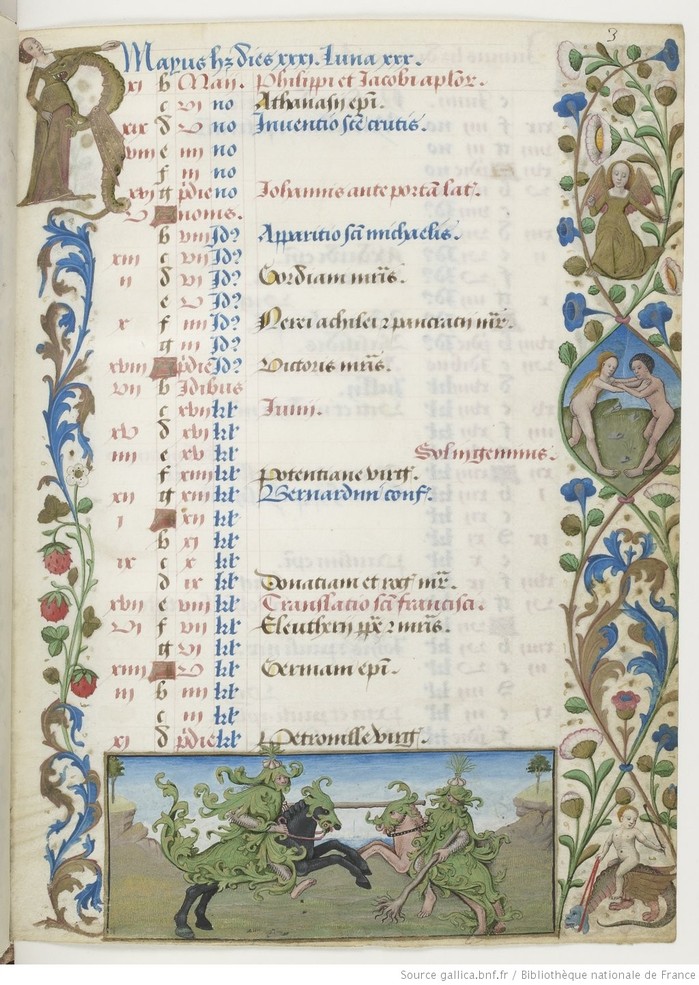
The Spinola Hours (Ludwig IX 18), owned by the Getty in Los Angeles since 1983, is mostly known for it spectacular illumination program, directed by the Master of the James IV of Scotland with contributions by the Master of the Dresden Prayer Book, the Master of the Lübeck Bible, the Master of the Prayer Books of around 1500, and the Workshop of Master of the First Prayer Book of Maximilian. The calendar has architectural borders, with various saints depicted(Philip and James, and the Invention of the Cross in f.3v below) in roundels and little pseudo-friezes with people playing games.
The entries of the calendar are less spectacular. It's a complete calendar, the only day without a saint (May 5, see f.3v below) is filled with the end of the following day's saint (Latina[m] from the end of John at the Porta Latina). Many of the names are very abbreviated, specifically the jobs, probaly due to the space constraints of the double column layout. The saints are a wide selection, with no obvious pattern, but they seem to align with the Flanders origin of the MS.
(DB Id: 202)
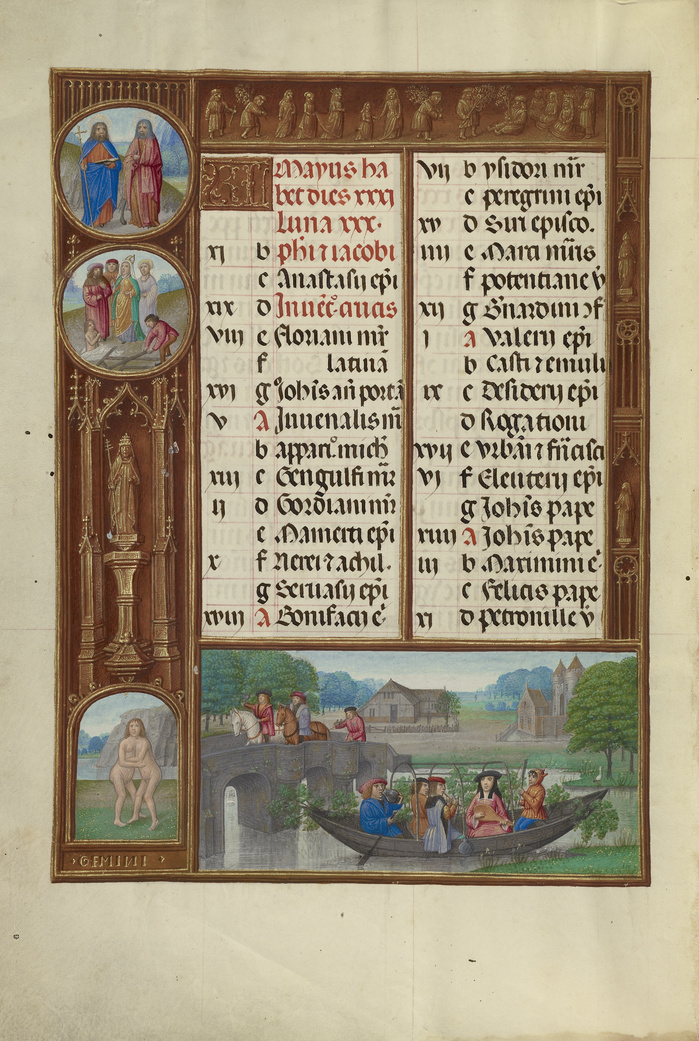
The Barberini Hours was made in Rouen approximately in 1510 and is another Book recently added from the Biblioteca Apostolica Vaticana, shelfmark Barb.lat.487. The illuminations in the book are attributed to Jean Pichore. The calendar has one month per face, and is sparsely filled, with only 165 entries. Many of the Rouen-specific saints appear in the calendar, including the Translation of St. Audoenus (Ouen), on May 5th (See f.3r below).
(DB ID: 161)
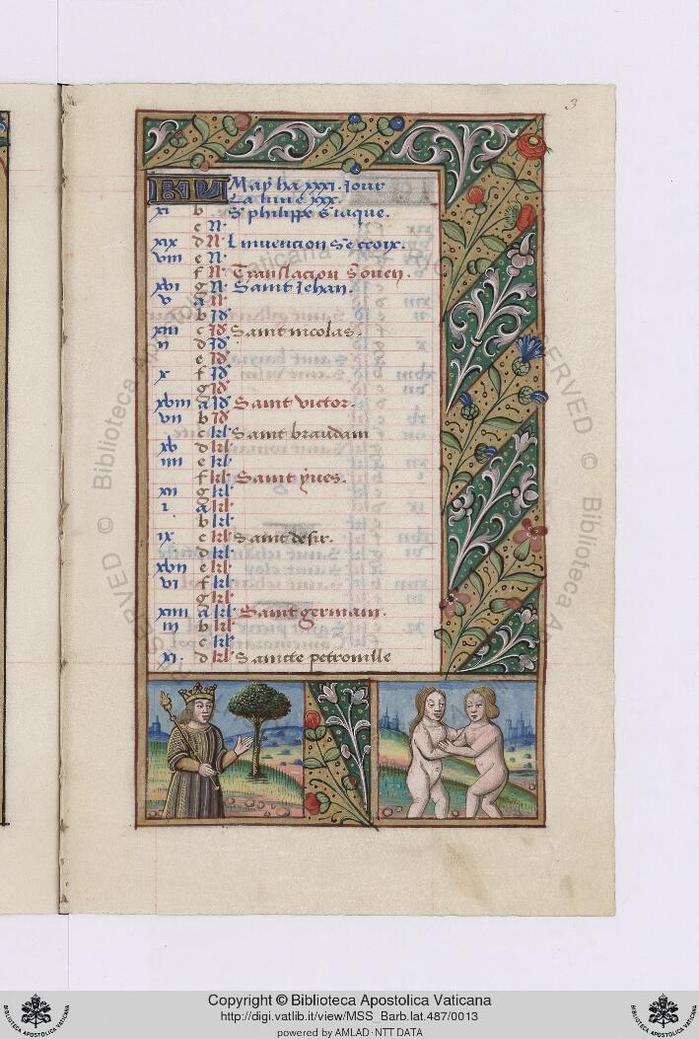
Harvard's Houghton Library MS Typ 553 is a weird Use of Rome Book from the late 15th century, only localized to "Northern Italy". The calendar is unevenly populated, 5 saints in March compared to 20 in January, and has a very large proportion of "high" importance (red) names, more even then normal rank saints. In addition to the usual saints, there are also most of the zodiac signs indicated as well as some here to for yet unidentified liturgical indications(see line 12 in May, f3r below). The scribal work is also unusual, there is no horizontal ruling at all, so the saints are often not alligned with the date information.
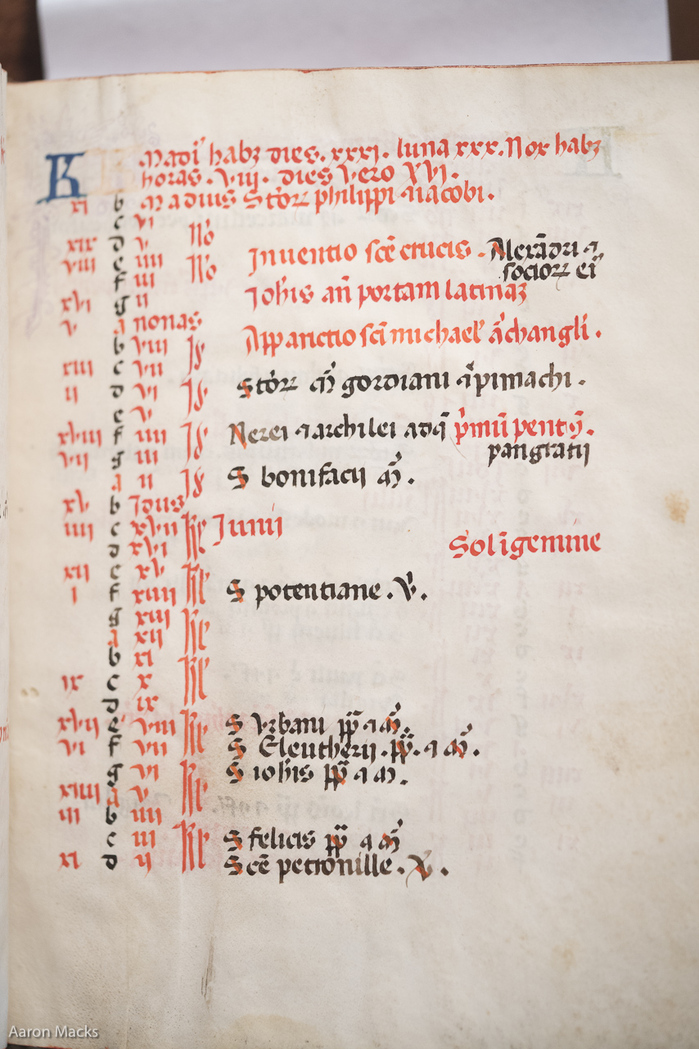
Walters MS W.439 is a late 15th Century Book from Ghent, usage unknown, with a severly underpopulated calendar, it contains only 132 entries. The unusual saint included is Saint Hadulphi (Bishop), who is unidentified as of yet. His deposition is May 19th(see red-black alternating letters below, f.5v) and his translation is August 31.
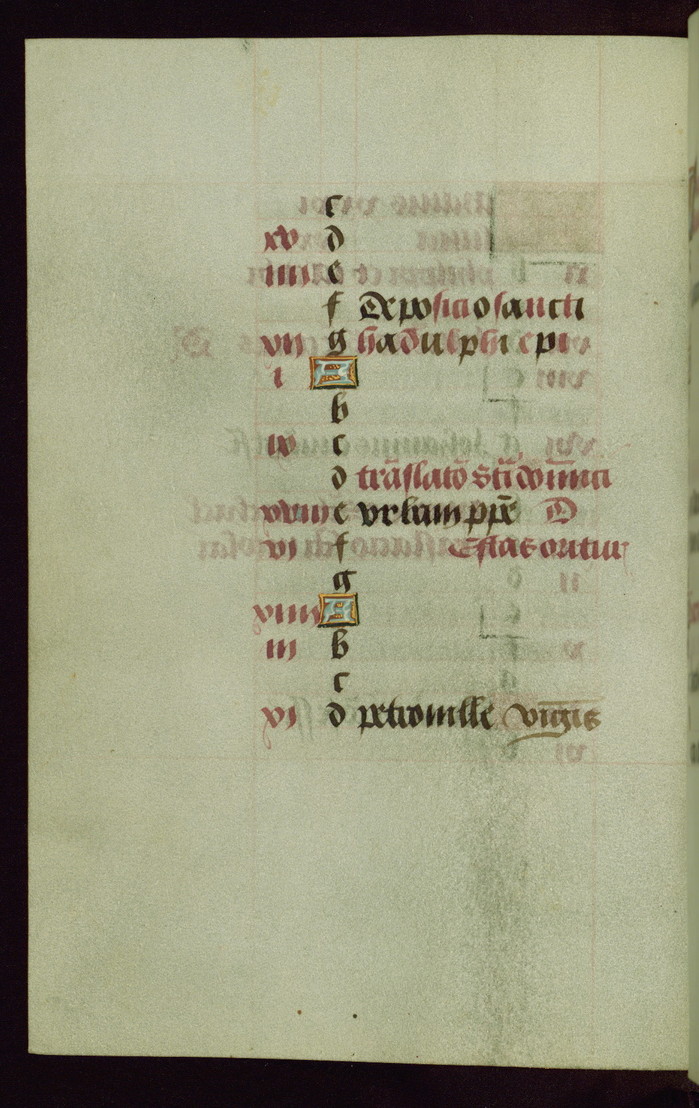
British Library Yates Thompson 29, known asthe 'Hours of Bonaparte Ghislieri', formerly known as 'The Albani Hours', is a lovely Humanistic Use of Rome book, from Bologna, about 1500. The calendar is decorated with the expected foliage and cameos, and the bottom of the first page of each month has an "important" saint, though not always one realated to the month. There's an interesting error in the months of May and June, may is incorrectly written with 30 days, ending with a dominical letter of 'c' (see f.5v below), which would have been right for May 30th. Either as an intentional correction or, more likely, as an error from the same cause, June has 31 days, and starts with dominical letter 'd'. The saint on the second line of June, however, is a correct saint for June 1, and the rest of the month continues in the same manner. There is no evidence for this practice, but if one were copying from a non-paginated calendar, this mistake would be easily possible
